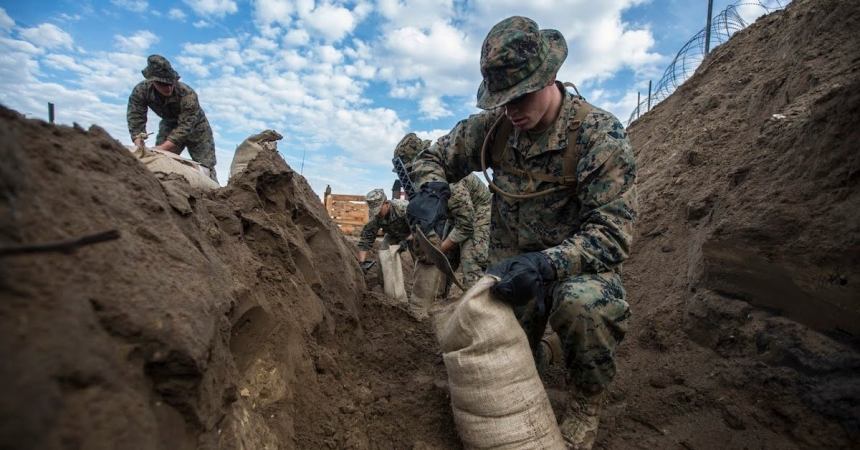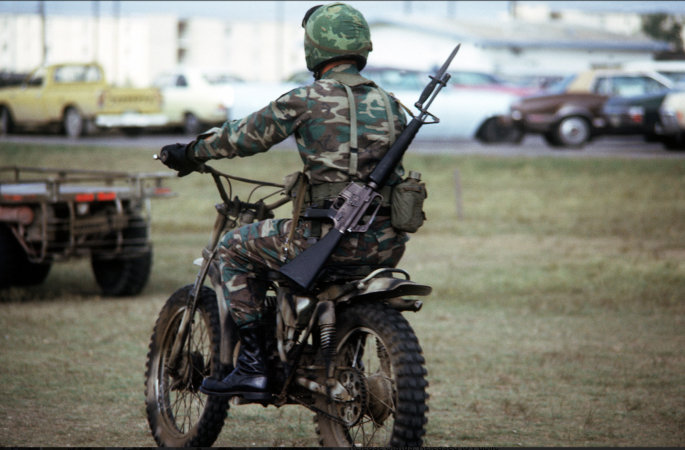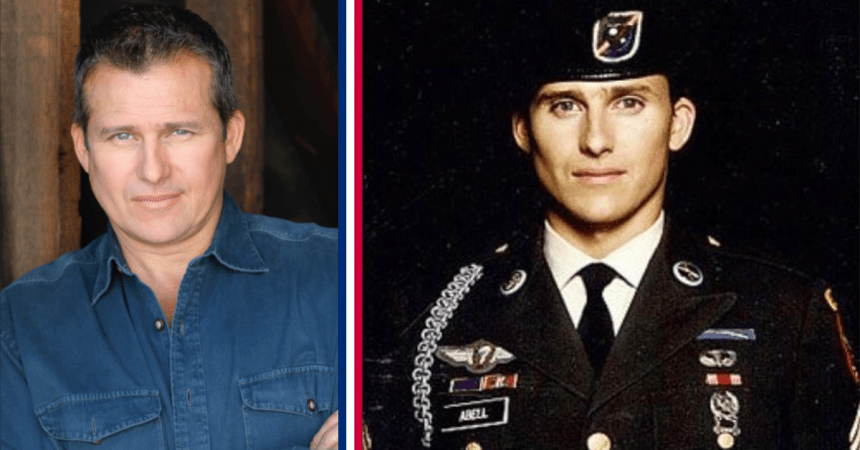Time and again in my line of work, people ask me, “What did you do to prepare?” I usually respond with some sort of reference to steel genitalia, eating large amounts of bacon, and shooting nails from my eyes. That usually wows people.
After the hilarity that is EVERY encounter with me, I give them an answer that always seems to underwhelm. “I try to be as strong as I can. All the time. I just want to be the strongest guy out there. That’s my number one goal. Then it’s cardio and mobility.”
Seriously, that’s it.
If you want, I can get into long physiological discussions about how stronger people are less taxed by the same effort expressed on an event by a weaker person. There are so many examples out there, I won’t even bother to ham-handedly try to quote them or paraphrase a saying they came up with.
Related: 4 key differences between the Green Berets and Delta Force
Do you wanna geek out and banter about the Krebs Cycle? Wanna quote grip strength tests designed by dudes that don’t lift trying to extrapolate the best anaerobic exercise for slow twitch muscle fiber performance? Well, tough crap, I am not that good. The point is this — I can stomp on the ground and scream until I am blue in the face, but it doesn’t matter. I can only tell you what I have seen, and what I think works.
The fact of the matter is this: the stronger man nearly always wins. This isn’t story time, and Goliath wins in real life kids. The freakishly strong 30-year-old whips the young buck more frequently than he doesn’t. The underdog is a great story — but there is a reason why he is the underdog. It’s cause no one thinks he can win, and he most likely won’t. Think Vision Quest: could Louden Swain really beat Shute? Uh, hell no. That dude carried logs up and down steps like, all day, like a damn boss. Plus, Shute looked like he was about 195 pounds as a high school wrestler, and Matthew Modine’s character dropped to 168 pounds to fight him… sorry, I digress.

After covering what I do to prepare, the conversation progresses. Next comes, “What is the typical military member/SOF Operator?” Well, I can’t tell you that. I’ve seen huge, jacked, 225-pound football players quit, cry, and fail. I have seen un-athletic, uncoordinated 155-pound 18-year-olds dig deep and carry those 225-pound guys. There is a single commonality amongst all those that make it, compared to those that don’t, strictly physically speaking. That commonality is strength.
Across the board, the men and women that pass tough selections and outperform their peers in the military are simply stronger than their peers. I did not say “bigger,” I said stronger. Stronger in all tasks, globally stronger. Can you throw on one-third of your bodyweight in armor and gear and carry your friend 400m at a dead sprint? No? Well then, Turbo, I don’t care what your marathon time is.
“Well, fine then. Describe your ideal team mate” is usually what follows next. Which is weird, that people want me to talk about my dream teammate, which is a guy.

Anyway, give me a 180-200-pound guy that can squat, deadlift, press, clean, and snatch close to the “accepted” standards for athletic performance. Add in cardio to his regimen — sprints, preferably. Every once in a while, with safety in mind, force him to work longer than 40 minutes. It should be taxing. Every single gym session works him toward a common goal — mobility, flexibility, strength, power, explosiveness, and injury prevention. If any workout doesn’t directly benefit (without excluding) those tenets, then don’t do it. Strength is priority numeral uno. Cardiovascular/cardiorespiratory conditioning is second, tied with mobility and injury prevention. Everything else — aesthetics, fad training ideas, things you read in muscle and fitness about your abs- throw them away. Let’s not get cute until we are in the top 10 percent of our weight class.
In the current fitness enthusiast world we find ourselves today, I almost always get the following retort next: “BUTBUTBUT what about functional strength? Big guys aren’t the only useful ones. Who cares how much I can lift in the gym real life is where you need it, I have mad cardio and sick abzzzz blah blah blah.”
I will put this as plainly as I can. Being globally stronger, stronger as a whole person, will translate to “functional capability”. I could not give a rat’s ass if a teammate of mine can’t do a nifty “fitness trick” like a double under, or a handstand pushup, or a muscle up. Why would I? Can you give me a real life task where a double under directly translates? Let me head you off here — we took care of “cardio” already. Double-unders are a barely useful parlor trick.
Related: 5 key differences between Delta Force and SEAL Team 6
If you cannot pick me up wearing my kit and all my gear — I weigh 260 pounds loaded down — then you are useless, and you don’t get a spot. Sorry, but this is real life. You don’t get to scale real life. I don’t care if you can take half of your bodyweight and move it from ground to overhead 30 times reeeeaaaaallly fast. How fast can you lift 140 percent of your bodyweight to your shoulder and run 100 meters to cover? Oh, you can’t? Then stop with all the “functional fitness” crap to support your point as it applies to the SOF environment. Or produce the science and vetted studies to back up your point. Pro tip — those studies don’t exist.

I want to break this down to brass tacks. In my experience, both in the military and the SOF community, stronger people really are harder to kill. I can tell you from first hand experience, and from second and third hand experience. If you focus 80 percent of your energy to making yourself as strong as you can be, you will be more useful, around for longer, and more likely to be a success in this small focus group.
I liken it to fighting — good fighters want to be stronger later in the fight. Ask an experienced fighter how it is to fight someone that is truly stronger than they are. It is unnerving. Better fighters do this with strength training.
In the end, I always use this analogy: “You can always dig deep and find bigger lungs. In the fight, in the heat of the moment, a true warrior can find a couple more steps, another sprint. That’s going to be there. But strength? You can’t just find a 100-pound PR when you need it. If you can’t lift 280 pounds off the ground and you need to move 350 — well, get as amped up as you would like. Your double unders aren’t going to help you now.”
And if you train to be able to run away, to simply exist as opposed to being strong enough to finish the fight, well, then run away is all you got. And that’s not the business we are in.
-Aaron
The author of this article is an active duty special operator. We are protecting his identity by only using his first name. This article first appeared in The Havok Journal on 26MAR14.


























